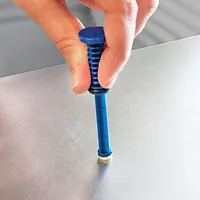Today’s Food Sanitation Programs

The primary focus of current food sanitation is to provide a program that produces a quality and wholesome product. The ultimate goal is to “Protect the Brand.”
To ensure the success of an effective sanitation program, the better the sanitors/team understand “why” they do certain things, the better dedication and commitment they will provide on a day-to-day basis. Keys to success for any sanitation program include staffing, cleaning equipment, complex cleaning equipment concerns, defined production area equipment with specific cleaning and sanitizing procedures (Sanitation Standard Operating Procedures) and—most importantly—training.
The Steps of Sanitation
Some people will look at sanitation as simply foam, rinse and sanitize. However, when we look at the Steps of Wet Cleaning, there is more to the story. As you develop your practical sanitation program, these steps should include the following:
1) Dry Clean: Sweep floors and remove materials, tools, loose bulk soils, etc. Disassemble the appropriate equipment and prepare the room before the sanitation crew begins to use water hoses.
2) Pre-Rinse: Thoroughly rinse area and equipment surfaces using the appropriate water temperature (warm-to-hot water helps soil removal: 120 °F to 135 °F). This will greatly assist the rest of the sanitation program. Do a visual inspection to note whether the surface has been properly rinsed. Some facilities will use an adenosine triphosphate (ATP) swab to show their staff why it is important to thoroughly rinse the surface.
3) Clean: Apply detergent to all the surfaces, walls, floors, equipment, etc. Use mechanical action/scrubbing on designated surfaces. Ensure you have the right product at the right dilution. When foaming, a 5-minute contact cling-and-dwell time should be sufficient to penetrate, suspend and emulsify the soils. Benefits of being aware of contact time are that, in some instances, people apply foam before breaks and/or lunch breaks. Depending on the official time of the break, in most instances, the product will dry, thus forcing the sanitation crew to reapply and use more product as well as increase your labor cost. The key to applying detergent and utilizing mechanical action/scrubbing is to control biofilm.
4) Post-Rinse: Thoroughly rinse all surfaces, depending upon different applications. Low pressure and water volume should be given consideration too. Work from the walls to the floor and the equipment. Once the equipment is thoroughly rinsed, use an ATP swab to show your sanitors why a thorough rinse is important.
5) Inspect: Do a preoperational inspection to verify that steps 1–4 were accomplished effectively. If needed, deficiencies will be corrected (reclean, rinse and reinspect). Ensure standing moisture is removed. Remove any tools used in the process. Do your preinspection and sanitize any of your equipment components that are not accessible once reassembled.
6) Sanitize: Sanitize the walls, floors and equipment. Consideration can be given to foam sanitizing. Visual effects of foam sanitizing will make contributions to reducing water, along with a reduced usage of sanitizer. The majority of the sanitizers require a minimum of a 1-minute contact time to be effective. Water temperature is important and must be kept in the range of 70 °F to 95 °F. The key component with sanitizing is to verify that the ppm number is in the no-rinse range. Test strips and/or titration test kits are tools that can be used to verify and validate the sanitizer is being properly mixed.
Achieving Successful Sanitation
As we all come to learn, there are no shortcuts to administering an effective sanitation program. Focus on a safety-
oriented program that is practical. By making an ongoing commitment to training, your program will continue to produce a quality/wholesome product and, most importantly, “Protect the Brand.” The better the sanitation team understands the “whys” of sanitation, the better success and results you will generate with your program.
www.spartanchemical.com
Looking for quick answers on food safety topics?
Try Ask FSM, our new smart AI search tool.
Ask FSM →








